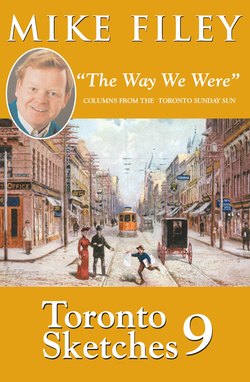Читать книгу Toronto Sketches 9 - Mike Filey - Страница 10
ОглавлениеAn Elegant Liquor Store
Located on the east side of Yonge Street, halfway between Davenport Road and St. Clair Avenue, is the former CPR North Toronto Station. Once regarded as a component of the city’s fast-growing passenger steam railroad network, the building saw its importance as a transportation hub vanish soon after the opening of Toronto’s new Union Station downtown on Front Street West.
Deprived of its passengers, the once-proud structure with its landmark clock tower was eventually converted to other uses. Perhaps it was its newfound popularity as a combination beer and liquor store that precluded any chance of its demolition, an irreversible fate that many of the building’s contemporaries had met. Whatever the reason, the station survived and re-opened in February 2003 as the site of Canada’s largest (and might I add most elegant) liquor store.
Interestingly, the reason that the CPR opened the new North Toronto Station in 1916 was actually nothing more than an act of defiance. The company, as well as the nation’s other two transcontinental railways, the Canadian Northern and Grand Trunk, had been ordered by the federal government to construct and help pay for a modern new railway station to replace the city’s outdated 1872 Union Station that was located on the south side of Front opposite today’s University Avenue. In addition to the cost of the new station the railways were also expected to help pay for a new viaduct and the associated bridges and underpasses that would be required to allow the trains unobstructed access to and from the station.
The estimated cost of the project was $28.5 million, and officials of the CPR eventually decided they wanted no part of it. They would build their own station instead. And it would be far uptown, adjacent to the company’s cross-town main line.
It’s summer 1916, and the CPR’s new North Toronto Station awaits its first visitors. The tower clock tells us it’s 10:00 a.m.
This decision having been made the company then hired the prestigious Toronto architectural firm of Darling and Pearson to design the new station. The first set of drawings was altered when it was decided that the Canadian Northern would use the same facility. Finally, on September 9, 1915, Toronto’s popular mayor Tommy Church tapped the station’s cornerstone into place.
The mayor was back a little more than nine months later to officially open the new $250,000 station. Within weeks of the opening approximately 10 trains a day were calling at the new CP North Toronto Station.
Still a stately building, even though the clock has long since vanished, the station awaits its future in this photo I took more than a decade ago.
The Canadian Northern wouldn’t use the station very long, though. It, along with several other financially embarrassed railways including the Grand Trunk, were taken over by the federal government and combined into the new Canadian National Railways.
Before long the new North Toronto Station was overcrowded, but the company still refused to get involved in the new waterfront station. Rumours started to circulate that the CPR had acquired a large parcel of land close to where Maple Leaf Gardens now stands on Carlton Street, just east of Yonge. The rumours suggested that it would be here that CPR would build a mammoth new underground railway terminal of its own complete with a huge hotel soaring high above the proposed station. A 100-foot-wide tunnel would be built through the terminal, and trains would be brought to the proposed new downtown terminal from the main line at the existing North Toronto Station. Of course, it was all rumours.
Eventually, CPR officials thought better of their decision not to be part of the majestic new Union Station on Front Street, and by late 1929 CPR trains were operating out of the new facility. Meanwhile, the North Toronto Station, now devoid of any railway traffic, soon took on a new role as the site of beer and liquor outlets.
The building has suffered over the past few decades, but now with its facade and interior all nicely cleaned up and its 140-foot-high tower featuring a clock once more, the CPR North Toronto Station is a shining example of what can be done with our city landmarks if someone cares.
February 2, 2003
